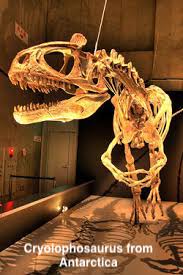
From plants to dinosaurs
Credit for the discovery of the first fossils from Antarctica usually goes to the Norwegian whaling Captain Carl Anton Larsen. Sailing in the whaler ‘Jason’ he was mainly interested in harvesting right whales.
However, he set foot on Seymour Island in the austral summer of 1892-3, where he found beds of fossil shells and tree trunks (the last tree in Antarctica, a southern beech, lived a few million years ago).
The scientist William Bruce, who was there at the time, on another ship, noted that the fossils ‘indicate a warmer climate than now prevails in these high summer latitudes’, the first time that it was recognised that Antarctica wasn’t always a frozen wasteland.
The Swedish geologist Otto Nordenskjold in 1902 was the next person to search for fossils in the Antarctic. He found Jurassic plant fossils at Hope Bay and the bones of giant penguins nearly 1.5 metres tall.
In 1911-12 Australian Frank Debenham, as part of Scott’s Terra Nova expedition, found fossilised bones of 380-million-year-old fish.
Scott’s tragic south pole journey was not in vain since his party collected rock specimens containing ancient seed fern plant fossils.
Since the plant was known only from India, and Antarctica is a long way from India, the first suspicion formed that the continents may have one day been joined in a supercontinent that broke apart (Gondwanaland).
There were many further fossil finds in Antarctica and then, in the field season of 1990-91, geologist David Elliot of Ohio University, found the fossil bones of a dinosaur approximately 190 million years old which came to be known as cryolophosaurus. Further discoveries followed.
The quest for fossils continues today with modern expeditions going out to remote sites every year to fill in more of the missing parts of Antarctica’s history
